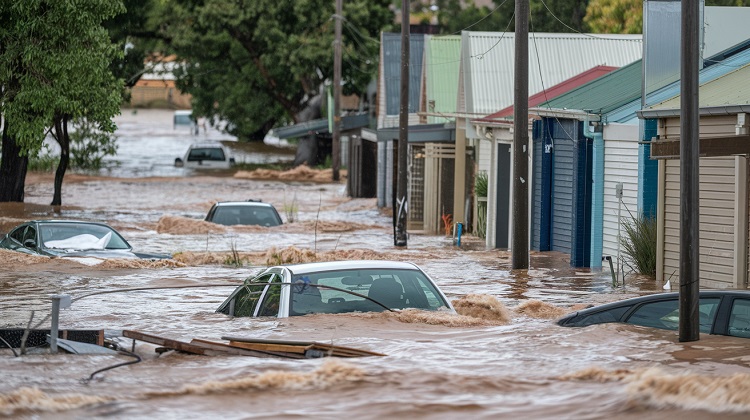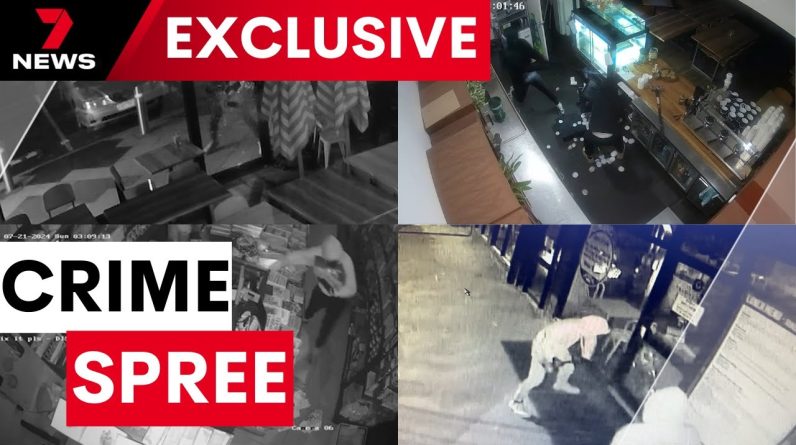Dozens of Melburnians say they saw what appears to be a meteor, blazing through the sky around midnight moments after feeling the ground shake and a loud bang.
Melbourne’s Spectacular Midnight Sky Show: Unveiling the Mystery Rocket
Melbourne residents were recently treated to a stunning light show in the night sky. A beam of light, accompanied by a loud boom, captivated onlookers from Mount Buller to the Melbourne CBD. Reports of the sighting even reached as far as Bendigo, two hours north of Melbourne.
Speculation ran rampant as to whether it was a meteor, comet, or space debris. However, it was later discovered that the event was caused by the remnants of a Russian Soyuz rocket.
This incident highlights the pressing issue of space debris management as Earth’s orbital traffic gets increasingly congested.
Key Takeaways
- A beam of light crossed Victoria’s night sky for almost a minute, causing a loud boom and exciting residents.
- The space junk responsible for the event was likely the remnants of a Russian Soyuz rocket launched from the Plesetsk Cosmodrome.
- The rocket weighed 105 tonnes and was 25m long, and surviving parts were planned to re-enter the atmosphere off the coast of Tasmania.
- The event highlighted the need for better space debris management and the importance of monitoring and tracking space debris for safety purposes.
The Astonishing Light Display: Melbourne’s Midnight Sky Show
Residents of Melbourne were mesmerized by the astonishing light display that illuminated the midnight sky, sparking speculation about the origin of the mysterious rocket. The beam of light crossed Victoria’s night sky for almost a minute, capturing the attention of onlookers from Mount Buller to the Melbourne CBD. Reports of the sighting even extended as far as Bendigo, two hours north of Melbourne.
Bystanders couldn’t help but wonder whether it was a meteor, comet, or space junk causing this spectacular show. Experts later identified the space junk as the remnants of a Russian Soyuz rocket that had been launched from the Plesetsk Cosmodrome. It was revealed that the rocket had put a new global navigation satellite into orbit. The light from the burning pieces indicated the presence of burning metals or plastics.
Unraveling the Enigma: Identifying the Mystery Rocket
Experts have identified the remnants of the rocket as likely belonging to a Russian Soyuz launched from the Plesetsk Cosmodrome.
The rocket, weighing 105 tonnes and measuring 25 meters long, was responsible for the dazzling light show in Melbourne’s midnight sky.
The surviving parts of the rocket were planned to re-enter the atmosphere and fall into the ocean off the south-east coast of Tasmania.
The burning pieces of the rocket emitted a bright light, indicating the combustion of metals or plastics.
This identification rules out the possibility of the light show being caused by a meteor or comet, as natural meteors typically glow green or blue due to their chemical composition.
The sonic boom heard during the event can be attributed to the rocket’s speed, which broke the sound barrier.
As Melbourne residents expressed curiosity and excitement about the event, experts emphasized the need for better space debris management to ensure the safety of space activities.
Comparing Rockets and Meteors: Understanding the Differences
While rockets are man-made objects designed for space exploration, meteors are naturally occurring celestial objects that enter Earth’s atmosphere.
Rockets are specifically built by humans to transport payloads, such as satellites or spacecraft, into space. They rely on powerful engines and controlled propulsion systems to generate the necessary thrust for liftoff.
On the other hand, meteors are fragments of asteroids or comets that originate from outer space. When they enter Earth’s atmosphere, friction with the air causes them to heat up and produce a glowing trail of light, commonly known as a shooting star.
Unlike rockets, meteors are not under human control and follow a trajectory determined by their initial velocity and the gravitational pull of celestial bodies.
Impact on Melbourne: Witnessing the Spectacular Sky Show
Many people in Victoria were captivated by the extraordinary light display in the night sky. The beam of light crossed the sky for almost a minute, causing a loud boom that could be heard from Mount Buller to the Melbourne CBD. Reports of the sighting extended as far as Bendigo, two hours north of Melbourne.
Bystanders speculated whether it was a meteor, comet, or space junk. It was later identified as the remnants of a Russian Soyuz rocket launched from the Plesetsk Cosmodrome. The rocket, weighing 105 tonnes and measuring 25m long, had put a new global navigation satellite into orbit.
The event was recorded by dozens of people, and residents expressed curiosity and excitement about the event on social media.
Concerns and Solutions: Managing the Growing Space Debris
The Australian Space Agency is collaborating with government partners to develop a plan for re-entry debris. This plan aims to address concerns about the growing amount of space debris, as Earth’s orbital traffic becomes increasingly congested. Sightings of space debris have become more common, highlighting the need for better space debris management. Although these sightings don’t directly harm people, they emphasize the importance of monitoring and tracking space debris. Experts emphasize the importance of developing new satellite observation methods to predict the paths of orbiting objects and avoid collisions. The Australian Space Agency and its partners recognize this challenge and are working on a comprehensive plan to address the issue of re-entry debris. Their goal is to develop effective strategies that mitigate the risks associated with the increasing amount of space debris and ensure the sustainability of space exploration and satellite operations.
Collaboration for Safety: The Australian Space Agency’s Plan
Collaborating with government partners, the Australian Space Agency is actively developing a comprehensive plan to address the growing concern of re-entry debris and ensure the safety of space activities.
With Earth’s orbital traffic becoming more congested, sightings of space debris have become more common. While these sightings don’t directly harm people, they highlight the need for better space debris management.
The Australian Space Agency recognizes the importance of monitoring and tracking space debris to prevent collisions and potential damage to satellites and spacecraft. By working with government partners, the agency aims to improve satellite observation methods and predict the paths of orbiting objects more accurately.
This collaborative effort will help mitigate the risks associated with space debris and safeguard the future of space exploration and satellite operations.
Ensuring Space Activities’ Safety: Monitoring and Tracking Debris
To ensure the safety of space activities, the Australian Space Agency actively monitors and tracks debris in Earth’s orbit. With the increase in orbital traffic, sightings of space debris have become more common, raising concerns about potential collisions.
The agency recognizes the need for better space debris management and is working with government partners on a re-entry debris plan. By monitoring and tracking debris, they aim to predict the paths of orbiting objects and prevent potential hazards.
This proactive approach helps to safeguard space activities and protect valuable assets, such as satellites and future space missions. The Australian Space Agency understands the importance of maintaining a safe and sustainable space environment, and their ongoing efforts in monitoring and tracking debris contribute to achieving this goal.
Albion News is a great place to find informative, up-to-date news articles. We provide a wide range of unique articles that offer an interesting perspective on current events from around the world and from various different sources. You can easily search for the topics that matter most to you and explore in-depth pieces that provide insight into the issues and important debates occurring today. Albion News helps you stay informed with carefully researched and credible stories!







